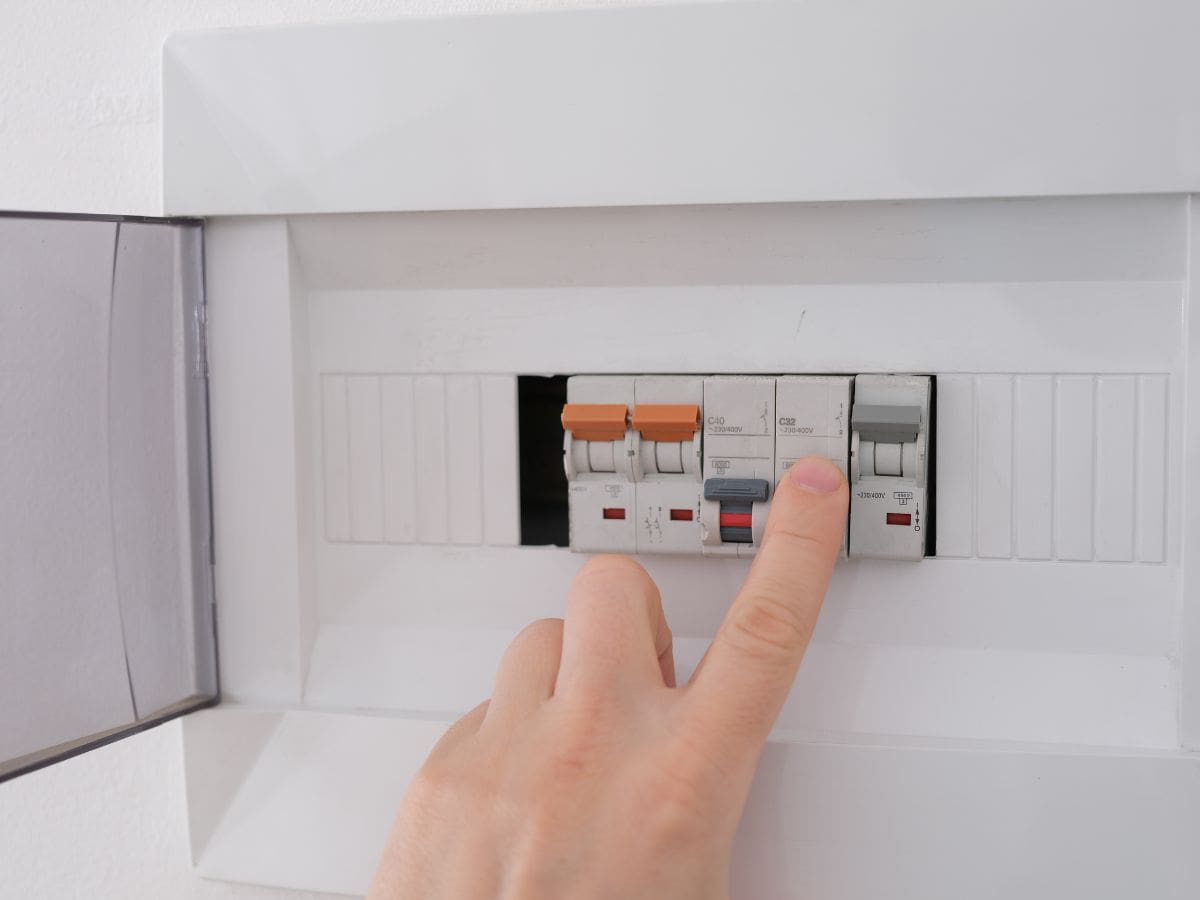We know how frustrating it can be when your heat pump trips the breaker, leading to a chilly home and potential safety hazards.
We’re here to help you understand why this happens, what it means for your home comfort, and, most importantly, what you can do about it. There’s a lot to unpack here, and we believe in equipping our readers with knowledge so they can make informed decisions. But remember, it’s always best to seek professional help when in doubt.
The Function of a Circuit Breaker in Your HVAC System
Your circuit breaker plays an important role in your HVAC system’s overall safety and functionality. Think of it as the bodyguard of your home’s electrical circuit. Its job is to monitor the flow of electricity along the electrical wiring, ensuring that nothing overheats or overloads.
If there’s too much electricity flowing—perhaps because your HVAC system is working extra hard during a hot summer day or a cold winter night—the circuit breaker steps in. It disrupts the flow, effectively ‘tripping’ to prevent any potential damage or fire hazards.
However, if your circuit breaker is tripping on a r egular basis, it’s a sign that something is amiss. Maybe your HVAC system is overworking, or there’s a fault in your electrical wiring. While it might be tempting to investigate this yourself, we strongly recommend getting a professional technician involved. They can accurately diagnose the problem and fix it safely and efficiently.
Remember, when it comes to your home’s safety and comfort, it’s always worth relying on the professionals.
Causes of Heat Pump Breaker Tripping
Sign 1: Inconsistent Indoor Temperatures
A noticeable fluctuation in indoor temperatures can indicate an issue with your heat pump. If you’re experiencing chilly drafts in certain parts of your home, even though your heat pump is working, this could be causing your breaker to trip.
Sign 2: Visible Damage to the Heat Pump
Take a look at your heat pump. If you spot any visible damage – such as dents, fraying wires or leakage – this could be the culprit behind your breaker’s frequent trips. Physical damage can cause the pump to overwork, leading to an overload of electricity.
Sign 3: Frequent Trust Issues with Your Heat Pump
If you frequently worry about your heat pump’s performance, it’s a sign to reach out to a professional. Frequent breaker trips can erode the trust you have in your HVAC system to function smoothly, and it’s always better to have a professional assess the situation.
Sign 4: Other Household Appliances Malfunctioning
Sometimes, the problem is separate from your heat pump. If other household appliances are also malfunctioning or causing breaker trips, it’s a clear sign that your HVAC system as a whole might be overloading the electrical circuit.
Sign 5: Excessive Dust in Your Home
A surprisingly dusty home can also signify a struggling heat pump. If your heat pump isn’t working efficiently, it might fail to maintain air quality, resulting in a dustier home environment. This could lead to increased demand on the system, causing the breaker to trip.
Preventative Heat Pump Maintenance and Servicing
Regular preventative maintenance is a crucial step in ensuring the optimal operation of your heat pump and preventing frequent breaker trips. Let’s discuss a few common routine tasks that can help maintain the efficiency of your system.
Regular Cleaning
Maintaining cleanliness is essential for the efficient operation of your heat pump. Dirty or clogged filters can force your system to work harder than necessary, leading to potential overload and, thus, tripping the breaker. It’s recommended to replace or clean the filters every 30 to 90 days (depending on general usage and environmental factors).
Annual Inspections
Having your heat pump professionally inspected yearly can help identify potential issues before they grow into severe problems. During an inspection, a technician will check all heat pump components, from the condenser and coils to the wiring and refrigerant levels, ensuring everything is in good working order.
Correct Sizing
Ensure that your heat pump unit is the right size for your home. An oversized system will switch on and off excessively, leading to frequent breaker trips. At the same time, an undersized one will need to work overtime to heat your home, potentially overloading the circuit.
Monitoring and Adjusting the Thermostat
Regularly check the thermostat settings. Incorrect or constantly changing settings can cause the heat pump to work harder, leading to frequent breaker trips. Try to maintain a consistent temperature that’s comfortable for your living space.
Call in the Professionals
While a homeowner can do some preventative maintenance tasks, it’s essential to involve a professional technician for more complicated tasks. They have the necessary experience and expertise to ensure your heat pump is running safely and efficiently.
Remember, regular maintenance not only prevents frequent breaker trips but also prolongs the lifespan of your heat pump, ensures optimal functionality, and maintains a comfortable home environment.
Conclusion
In conclusion, taking control of your home’s HVAC system isn’t just about preserving the life of your heat pump or maintaining a comfortable indoor temperature. It’s also about ensuring the safety and efficiency of your home’s electrical system.
Don’t let small appliance malfunctions disrupt your peace of mind. If you’re noticing frequent breaker trips, inconsistent temperatures, or any other signs of a struggling heat pump, it’s time to make a change.
Reach out to Hurliman Heating & Air Conditioning today. Our team of technicians is ready to provide timely and effective service to restore optimal functionality to your HVAC system. Don’t wait; schedule your service call now and take the first step towards a more comfortable and safe home environment.





